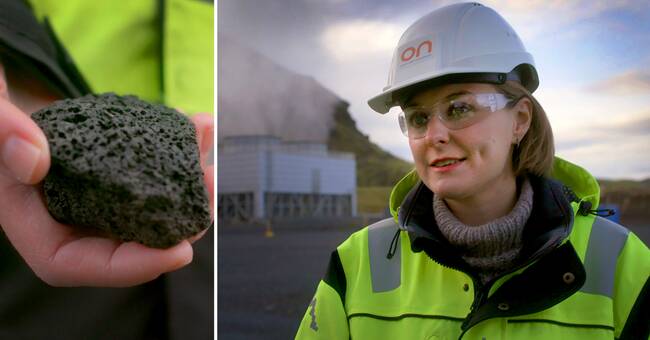Due to the climate crisis, researchers around the world are looking for ways to both stop emissions but also to store carbon dioxide.
In Iceland, one third of the Hellisheiði power plant's emissions are captured by mixing the carbon dioxide with water and pumping the mixture into the bedrock.
The island consists largely of the porous volcanic rock balsal salt, which naturally binds carbon dioxide.
That process can take hundreds of years, but at the power plant, researchers have accelerated the process for less than two years.
Inside the bale salt, the carbon dioxide in the water reacts with metals in the rock and forms other substances in solid form.
Expensive methods
The method reduces emissions but can also have negative side effects for the environment, according to the UN's climate panel IPCC.
Just as with mining, you have to dig out soil layers, groundwater can be affected, mining waste is formed and requires a lot of transport.
The technology at the Hellisheiði power plant is one of several different types of methods for capturing and sequestering carbon dioxide from power plants and industries.
According to the IPCC, they are all expensive, and therefore require either substantial subsidies or higher emission prices if they are to be able to make a global impact.
Binds carbon dioxide for at least 1000 years
Techniques for pumping carbon dioxide into the bedrock will in all probability be able to keep carbon dioxide away from the atmosphere for at least 1000 years, writes the IPCC.
- It is magic, but magic that usually happens by itself in nature.
When we have injected carbon dioxide into the stone, it stays there forever, says Sandra Snæbjörnsdóttir.
Want to know more about other ways to reduce carbon emissions? Watch "The world of science: - the technicians who want to hack the climate" in SVT2 on Monday 9 November at 20.00 or already now on SVT Play.

